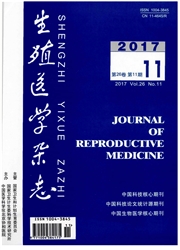

 中文摘要:
中文摘要:
目的通过对上海地区妇女对围绝经期健康保健知识的认知度及对相关知识需求情况的调查,探讨提高中老年妇女保健工作质量的依据。方法采用自行设计的调查问卷,对上海地区年龄在40~65岁的妇女就围绝经期健康保健知识及需求进行问卷调查。采用整体抽样的方法,在上海交通大学附属第六人民医院妇产科更年期门诊的初诊围绝经期患者进行围绝经期相关知识的问卷调查,作为医院组。对同期田林社区某一居民区符合围绝经期的妇女作为社区组。结果医院组和社区组人群对更年期症状认为“生理状况无需处理“分别占19.29%和36.28%;其中医院组认为是“病理状况需要治疗”的比率(44.47%)高于社区组人群比率(18.66%)。两组人群对围绝经期健康保健知识的获取主要来自媒体和同事朋友,医院组分别为46.82%和22.59%,社区组分别为30.41%和36.38%。医院组患者更倾向于从媒体和医务人员获得信息,而社区组更倾向于从同事朋友的渠道获得信息。结论上海地区妇女对围绝经期健康保健知识知晓率较低,对围绝经期健康保健知识的获取主要来自媒体和同事朋友。医院组更倾向于从媒体和医务人员获得信息,而社区组更倾向于从同事朋友获得信息。因此,我们医护人员应大力开展围绝经期健康保健教育,提高围绝经期健康保健水平。
 英文摘要:
英文摘要:
Objective: To survey the cognition and need of perimenopause health care in Shanghai women. Methods: By means of designed questionnaires, the data of cognition and need of perimenopausal care for women at age of 40-65 in Shanghai were analyzed. Results: For how to deal with perimenopause symptoms, the percentage of the chosen option of "It is a physiological process which does not need treating" is 19. 29% and 36. 28~ in hospital group and community group respectively. The percentage of the chosen option of "It is a pathological process that needs to be treated" is 44. 47% in hospital group, which is much higher than in community group (18.66%). In hospital group, the sources of information of perimenopause health care were 46.82% and 22.59% from media or workmates friends respectively. While in community group, the percentages were 30.41% and 36.38% respectively. The hospital group preferred to acquire the information from the media and medical personnel, while the community group preferred to obtain the knowledge fromConclusions: The awareness rate for perimenopause health care in Shanghai women is very low. the major source is from media or workmates friends. The hospital group preferred to acquire information from the media and medical personnel, while the community group preferred to obtain knowledge from workmates and friends. It is urgent for medical staff to enhance the education perimenopause health care among women to improve the level of perimenopause health care.
 同期刊论文项目
同期刊论文项目
 同项目期刊论文
同项目期刊论文
 期刊信息
期刊信息
